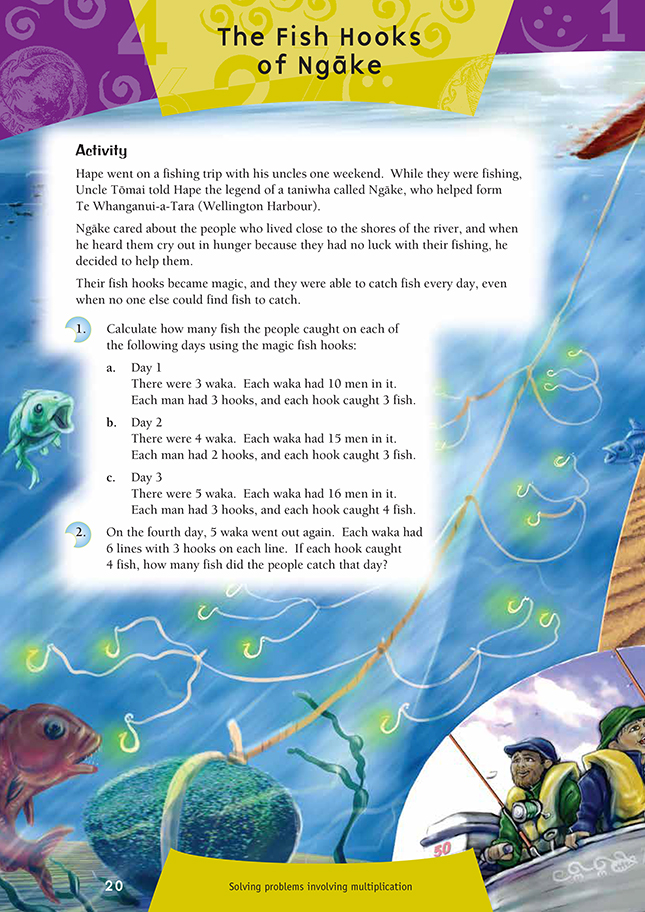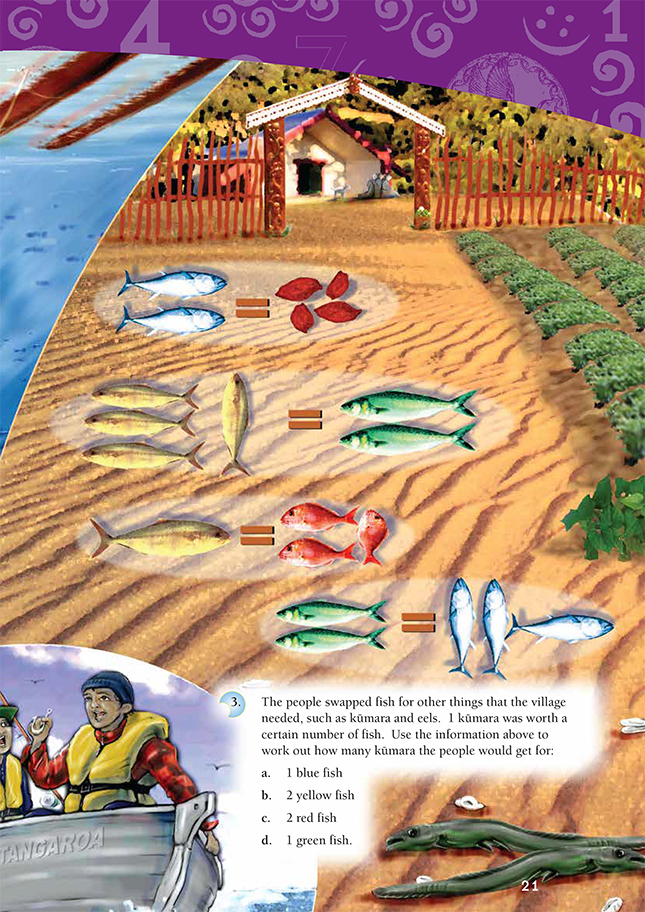This is a level 4 number activity from the Figure It Out series. It relates to Stage 7 of the Number Framework.
A PDF of the student activity is included.
Click on the image to enlarge it. Click again to close. Download PDF (342 KB)
solve multiplication problems
FIO, Level 3-4, Number, Book 2, The Fish Hooks of Ngāke, pages 20-21
For this activity, which involves number properties, students should be at least advanced additive.
It is most suitable for those who are advanced multiplicative.
The relationship between the waka, men, lines, hooks, and fish in questions 1 and 2 is multiplicative: waka x men x lines x hooks = fish. Encourage the students who cannot establish an abstract relationship to draw a diagram.
The multiplicative relationship for each part of question 1 is:
1a: 3 x 10 x 3 x 3
1b: 4 x 15 x 2 x 3
1c: 5 x 16 x 3 x 4
Question 2 is phrased differently (as the students are not told the number of men), but the multiplicative relationship is the same: 5 x 6 x 3 x 4.
In question 3, the students need to establish a relationship between the different kinds of fish in comparison to kūmara. They may use a variety of strategies to do this. In the process, they will develop algebraic understanding. (See also Algebra, Figure It Out, Level 3, page 21.)
The students could start by making links between the blue fish and the other types of fish and then adjust the blue fish and kūmara quation. For example, 3 blue fish equal 2 green fish, which in turn equal 4 yellow fish, which equal 12 red fish. The diagram shows that 2 blue fish = 4 kūmara,
so therefore 3 blue fish = 6 kūmara. So now the basic equation can be:
6 kūmara = 3 blue fish = 2 green fish = 4 yellow fish = 12 red fish. From this, the students can use division to find the number of kūmara for each type of fish:
6 kūmara ÷ 3 = 3 blue fish ÷ 3, so 2 kūmara = 1 blue fish;
6 kūmara ÷ 2 = 2 green fish ÷ 2, so 3 kūmara = 1 green fish;
6 kūmara ÷ 4 = 4 yellow fish ÷ 4, so 6 ÷ 4 (or 11/2) kūmara = 1 yellow fish;
6 kūmara ÷ 12 = 12 red fish ÷ 12, so 6 ÷ 12 (or 1/2) kūmara = 1 red fish.
Another way is for students to solve question 3a and then use this information to solve 3d, then 3b, then 3c. Students who are having difficulty could model the situation with coloured counters.
Answers to Activity
1. a. 270 fish. (3 x 10 x 3 x 3)
b. 360 fish. (4 x 15 x 2 x 3)
c. 960 fish. (5 x 16 x 3 x 4)
2. 360 fish. (5 x 6 x 3 x 4)
3. a. 2 kūmara
b. 3 kūmara
c. 1 kùmara
d. 3 kūmara

